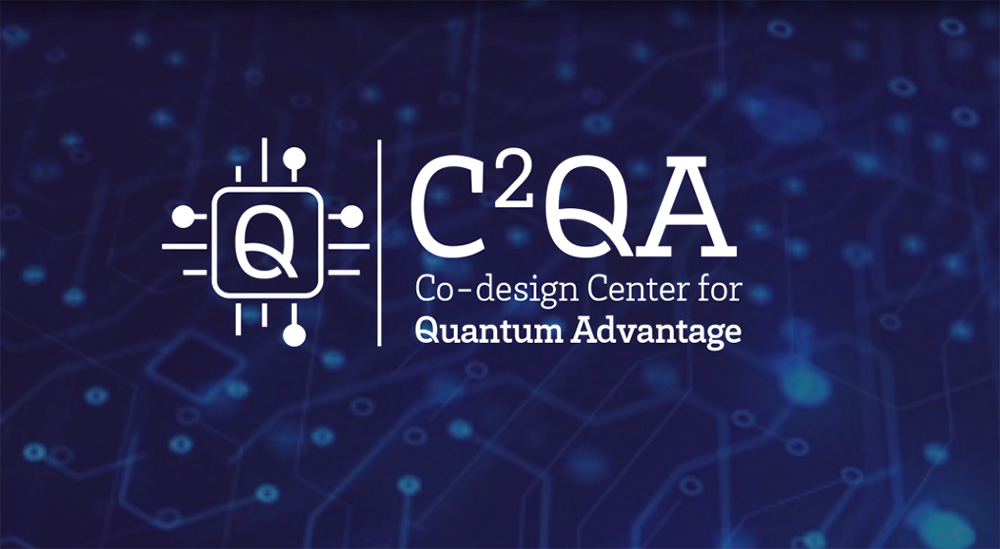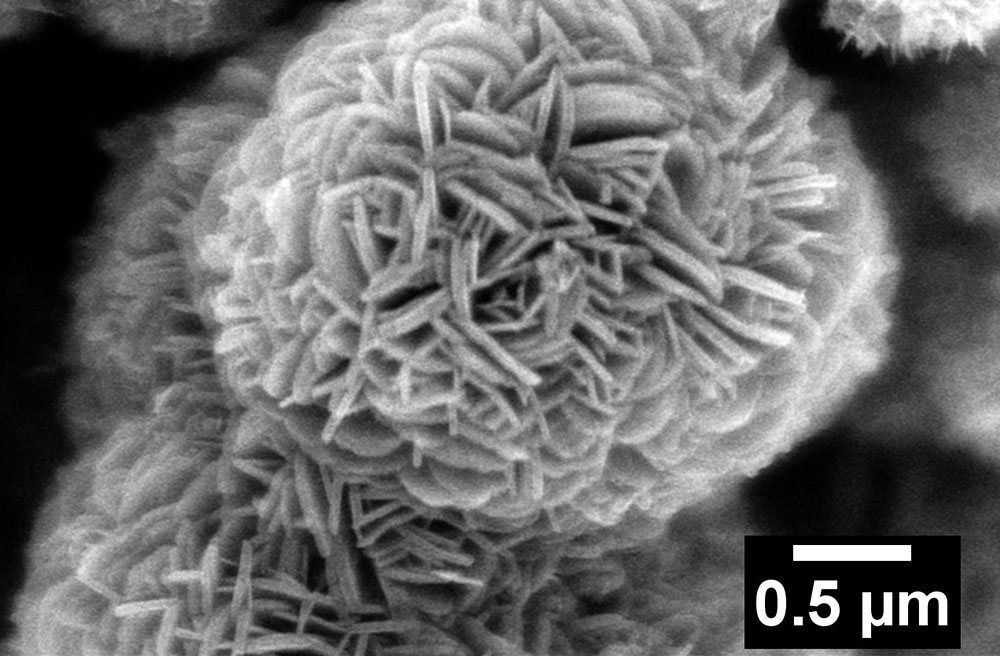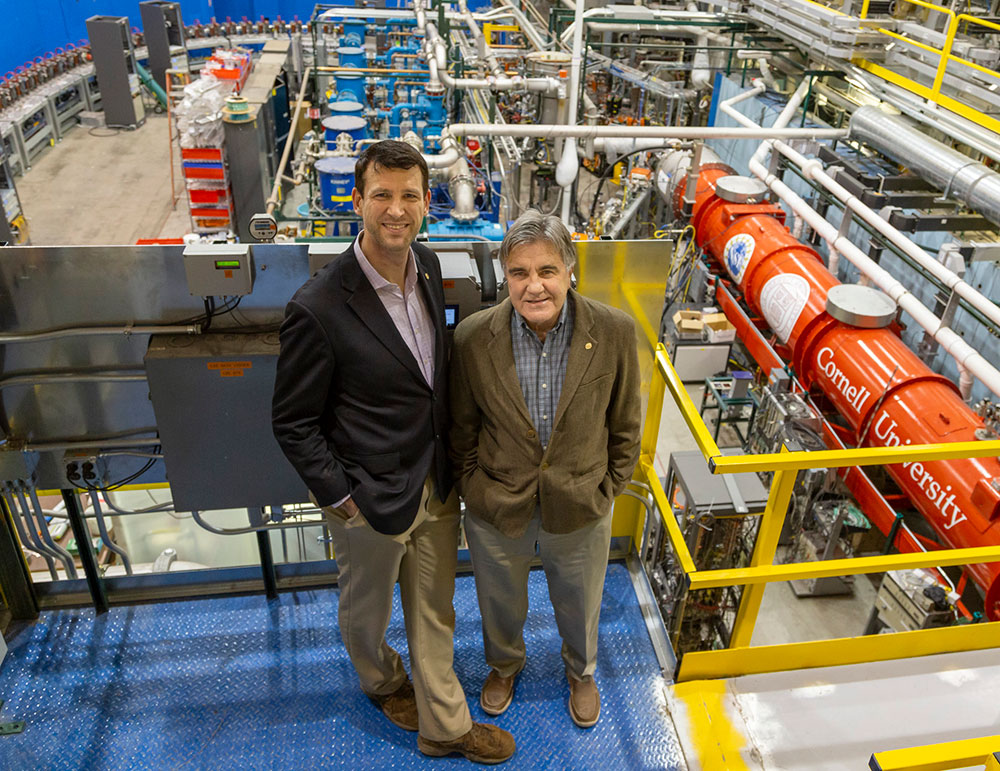Brookhaven Lab's Top-10 Stories of 2020
January 6, 2021

UPTON, NY—With all the remarkable changes and challenges that took place in 2020, the U.S. Department of Energy’s Brookhaven National Laboratory had a banner year in science. Many Lab employees worked remotely to keep vital science programs running while minimizing the spread of SARS-CoV-2, the virus responsible for the COVID-19 pandemic. And throughout this unprecedented year, dedicated Lab staff collaborated on new ways of working to transform scientific meetings, educational outreach programs, tours, and more to new virtual formats that reached larger audiences than ever before. Among the top stories of 2020, as measured by importance, page views, engagement on social media—or all three!—are:
Tackling COVID-19
Starting in the spring, scientists across the Laboratory began to focus their expertise and the Laboratory’s unique scientific tools on National Virtual Biotechnology Laboratory (NVBL)-supported efforts, user studies, and research to tackle the challenges of COVID-19—from computational modeling, to drug-discovery experiments at the National Synchrotron Light Source II, to exploring the properties of masks and more. See all the updates, including stories about how students conducting virtual internships contributed to some of the research.
Electron-Ion Collider

Brookhaven Lab was chosen to build a brand-new nuclear physics research facility, an Electron-Ion Collider that will explore the most fundamental building blocks of matter and the strongest force in nature. Brookhaven will work closely with partners from Thomas Jefferson National Accelerator Facility in Virginia to realize this one-of-a-kind research facility, which will attract scientists from around the world and spark technological advances with far-reaching impacts.
Quantum Leaps

Brookhaven scientists took a couple of quantum leaps, making strides in extending the range of quantum communications, a stepping stone to a new quantum internet, and establishing a new collaborative Co-design Center for Quantum Advantage (C2QA), which will leverage the Laboratory’s expertise in materials science to build the fundamental tools needed to create quantum computers.
RHIC’s Smashing Success
Nuclear physicists used our Relativistic Heavy Ion Collider (RHIC)—celebrating its 20th year of operations—to get a fresh glimpse of the particle interactions that take place in the cores of neutron stars, and to study how quarks and gluons, the inner building blocks of protons and neutrons, combine and stay confined within these composite particles. And our most popular social media post of the year featured stunning tracks of cosmic rays captured while calibrating RHIC’s STAR detector.
Catalysts for Artificial Photosynthesis
Brookhaven chemists made new discoveries about catalysts and reactions that mimic plants ability to capture solar energy and transform it to other useful forms of energy. For example, while monitoring intermediates produced while transforming carbon dioxide into formate, an energy-rich fuel, scientists discovered that a widely used compound thought to play only a "sacrificial" role enhances key steps of the cycle. To advance their work on “artificial photosynthesis,” several Brookhaven chemists have joined a new center for collaborative research on developing catalysts for harnessing solar energy in liquid fuels.
Better Battery Materials
On the frontier of energy storage, scientists at Brookhaven gained useful insights into materials for making better batteries. These included discovering how structural defects can improve performance and developing a way to increase capacity of a promising high-rate electrode material featuring a unique flower-shaped nanostructure.
Biomolecule Imaging Advances
Scientists at Brookhaven developed new ways to “see” and study biomolecules. They opened a new cryo-electron microscopy center, began work to develop a quantum x-ray microscope at the National Synchrotron Light Source II, and demonstrated a new way to tag and image cell membrane proteins in 3-D.
DNA Nanostructures
Speaking of biological molecules, scientists at Brookhaven’s Center for Functional Nanomaterials (CFN) found new ways to leverage DNA as a building material for making 3-D nanosuperconductors, peptide-coated origami-like structures for delivering drugs to tumors, and other ordered 3-D arrangements with potentially tunable optical or catalytic properties.
Matter-Antimatter Asymmetry
An international collaboration of theoretical physicists, including Brookhaven theorists, published a new calculation regarding the decay of particles called kaons. Comparing the prediction with experimental measurements gives scientists a way to test for tiny differences between matter and antimatter—which could help to explain the predominance of matter in our universe.
Multi-turn Energy-Recovery Accelerator
Accelerator physicists at Brookhaven Lab and Cornell University demonstrated the world’s first capture and reuse of energy in a multi-turn particle accelerator, where electrons are accelerated and decelerated in multiple stages and transported at different energies through a single beamline. This advance paves the way for ultra-bright particle accelerators that use far less energy than today’s machines.
NSLS-II, RHIC, and CFN are DOE Office of Science User Facilities.
Brookhaven National Laboratory is supported by the U.S. Department of Energy’s Office of Science. The Office of Science is the single largest supporter of basic research in the physical sciences in the United States and is working to address some of the most pressing challenges of our time. For more information, visit https://www.energy.gov/science/.
Follow @BrookhavenLab on Twitter or find us on Facebook.
2021-17630 | INT/EXT | Newsroom

















